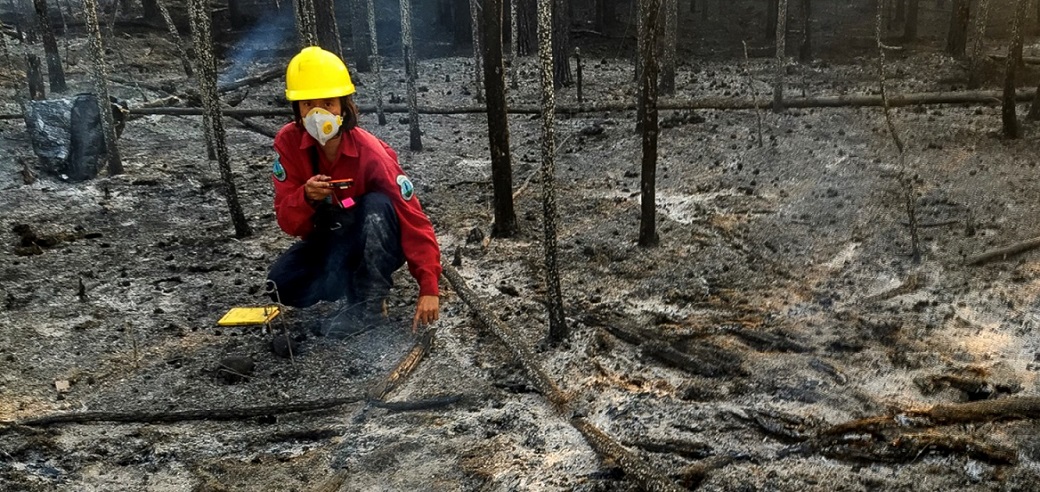
Dr Cristina Santin taking charcoal samples after fire in boreal Canada. In samples from ten different fires, the researchers detected EPFR in concentrations that exceeded those typically found in soils by as much as ten to a thousand times. (Picture: Stefan Doerr)
Every year, an estimated four percent of the world's vegetated land surface burns, leaving more than 250 megatons of carbonized plants behind.
Now new research involving wildfire experts from Swansea University has measured, for the first time, environmentally persistent free radicals (EPFR) in these charcoals, finding very elevated concentrations- in some cases even up to five years after the fire.
This is important because EPFR can generate reactive oxygen species (ROS), which have many different negative effects in living organisms.
Professor Stefan Doerr said: ““This could be a persistent hidden danger after fires.
“This can be especially relevant in those ecosystems which are not adapted to fire but are seeing more fire lately because of climate change, such as tropical rainforests or the Arctic tundra.
“With global warming and other human impacts leading to larger and more severe fires in many parts of the world, understanding fully their implications on fire-impacted ecosystems is urgent.”
Professor Doerr and his colleagues at Swansea University are conducting global research into the effects of fire on environmental processes such as the carbon cycle and erosion and, as a result, have collected a variety of charcoal samples from forest, shrubland and grassland fires in different climatic zones.
These samples formed crucial part of this latest research led by the University of Vienna which has just been published in Nature Communications Earth & Environment.
Dr Cristina Santin said: “We have gathered these during field campaigns carried out in many regions such as Canada, Europe and South Africa over the years. The wide range of samples is vital because it has allowed us to prove this is a ubiquitous phenomenon. “
The samples were sent to Vienna for analysis along with information on the timing, duration and intensity of the fires. Electron spin resonance (ESR) spectroscopy then made it possible to quantify the environmentally persistent free radicals in the studied material and to identify their adjacent chemical structures.
Professor Doerr and Dr Santin were also able to provide expertise on the context of environmental impacts of fires.
The study’s findings follow on from previous research by the Swansea team which estimated the global charcoal production per year is around 256 Tg of carbon, equivalent to around 12 per cent of total carbon emitted by fire.
Though it has provided fresh insights, the new research has also raised further questions: the fact that environmentally persistent free radicals occur in such high concentrations and remain stable over several years was surprising. In future studies, the researchers are planning to assess the consequences this may have for the environment.
Dr Santin added: “Our research shows charcoal is ubiquitous in the environment, so the fact that it has EPFR means this is a topic that clearly needs further investigation.
Our Research Highlights - Sustainable Futures, Energy and the Environment
